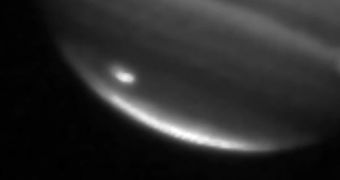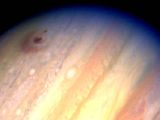Exactly 15 years after Jupiter ripped apart and destroyed the Comet Shoemaker-Levy 9, astronomers have discovered a new dark spot on the surface of the planet, which is comparable to the ones left behind by the former comet, when it slammed into the Jovian atmosphere. NASA made the find with the Jet Propulsion Lab's Infrared Telescope Facility atop Mauna Kea, in Hawaii, after receiving a tip from an amateur sky watcher in Australia that something was happening. The Southern Hemisphere is more fit for astronomical observations than the Northern one.
The new impact seemingly occurred at the planet's south pole, as evidenced by readings taken with a number of other telescopes. Unlike the 1994 event, which was predicted through calculations, and observed thoroughly from many sources back on Earth, the recent collision was only caught by chance, and no observatory was particularly interested in that area of Jupiter at the time. “We were extremely lucky to be seeing Jupiter at exactly the right time, the right hour, the right side of Jupiter to witness the event. We couldn't have planned it better,” Glenn Orton, a JPL scientist, says in a statement.
Orton reveals that NASA received a phone call from a certain Anthony Wesley, a resident of Murrumbateman, Australia, who told it that the planet had received a new “scar” similar to the ones in mid-1994, on early Friday. The caller also revealed that the impact must have occurred between 6 am and 12 pm EDT (1000 and 1600 GMT).
“It was a very near thing,” Wesley shares about his discovery in a post on his website. “I'd noticed a dark spot rotating into view in Jupiter's south polar region and was starting to get curious. When first seen close to the limb (and in poor conditions) it was only a vaguely dark spot, I thought likely to be just a normal dark polar storm. However as it rotated further into view, and the conditions also improved, I suddenly realized that it wasn't just dark, it was black in all channels, meaning it was truly a black spot,” he adds.
“My camera showed the spot clearly and I was lucky to get at great sequence with the dark spot and Io passing by. I was so thrilled that I didn't stop in time, so I missed the first hours of work this morning,” Lars Zielke, a Danish sky watcher who managed to get some footage of the dark spot on Jupiter with his telescope, told Space.

 14 DAY TRIAL //
14 DAY TRIAL // 
